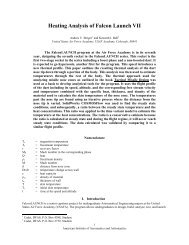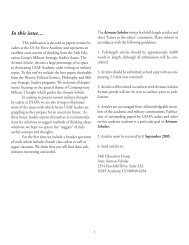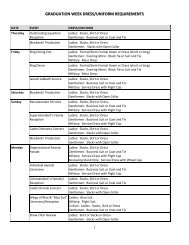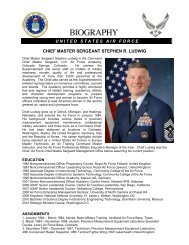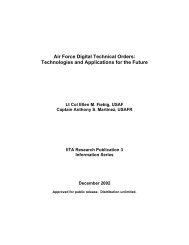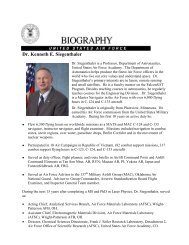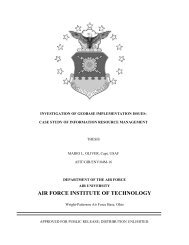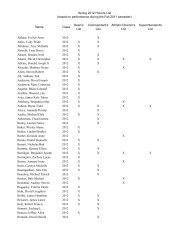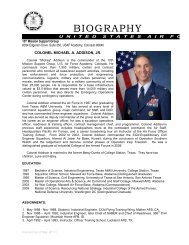the rollback of south africa's biological warfare program
the rollback of south africa's biological warfare program
the rollback of south africa's biological warfare program
Create successful ePaper yourself
Turn your PDF publications into a flip-book with our unique Google optimized e-Paper software.
team in Mozambique. That same year, he allegedly visited Porton Down. Now<br />
he is working for <strong>the</strong> ICBSW in The Hague as a BWC monitor.<br />
Gen. (ret.) Meiring stated that ANC/MK troops had been trained in<br />
CBW, and that SADF intelligence concluded that <strong>the</strong>re could have been<br />
chemical and <strong>biological</strong> agents in Mozambique. According to Meiring, in<br />
January 1992, he and <strong>the</strong> Mozambican General Dias went to <strong>the</strong> hospital to<br />
inspect troops that had reportedly been subjected to a gas attack by SADF. 146<br />
The SADF 6 th Medical Battalion found no evidence <strong>of</strong> a gas attack. The SADF<br />
concluded that <strong>the</strong> troops who were reportedly attacked had deserted in <strong>the</strong><br />
face <strong>of</strong> a RENAMO attack.<br />
The Steyn Report<br />
The Steyn Report was <strong>the</strong> most ambitious attempt to uncover <strong>the</strong> secret<br />
projects <strong>of</strong> <strong>the</strong> SADF, including Project Coast, with <strong>the</strong> aim <strong>of</strong> helping to<br />
restore civilian control over <strong>the</strong> military. The year 1992 was a very sensitive<br />
period, and rapprochement between <strong>the</strong> regime and ANC was proceeding<br />
slowly. The behavior <strong>of</strong> <strong>the</strong> security forces was a big problem given <strong>the</strong> weak<br />
civilian control. All attempts at reform met with resistance. In 1990, Lt. Gen.<br />
Steyn was SADF Chief <strong>of</strong> Personnel and was working with Jakkie Cilliers<br />
(now director <strong>of</strong> <strong>the</strong> Institute <strong>of</strong> Security Studies, Pretoria) on civilian control<br />
<strong>of</strong> military. Toge<strong>the</strong>r, <strong>the</strong>y produced a code <strong>of</strong> conduct for SADF that was<br />
suppressed. Later, Lt. Gen. Steyn proposed opening <strong>the</strong> SADF to blacks,<br />
which would solve <strong>the</strong> National Service bottleneck, but <strong>the</strong> proposal was also<br />
suppressed. The problem in SADF was that traditional leaders (Malan,<br />
Liebenberg and o<strong>the</strong>rs) had acquired an exalted status and were being driven<br />
by political convictions. Their underlings were following <strong>the</strong>m blindly. In such<br />
a situation, a neutral code <strong>of</strong> conduct was alien.<br />
In mid-1992, Lt. Gen. Steyn was transferred and promoted to Chief <strong>of</strong><br />
SADF staff, where he chaired staff functions and not line functions. However,<br />
he was in <strong>the</strong> position to control SADF <strong>program</strong>s. He worked with Roelf<br />
54




